THE INDIAN HISTORY, ART AND CULTURE
1. THE CHALCOLITHIC CULTURES OF CENTRAL INDIA
THE CONTEXT:According to the Ministry of Culture, the Chalcolithic cultures of Central India are adequately investigated and studied. Much of their aspects are sufficiently researched and analyzed.
THE EXPLANATION:
During field season 2021-22, ASI has received proposals for excavations at the sites of Chalcolithic affiliations at Eran, district Sagar and at Tewar, district Jabalpur of Madhya Pradesh.
Status of Archaeological Investigations in Central India
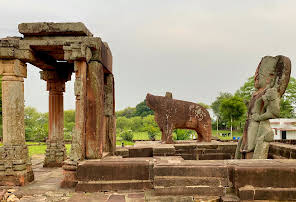
Excavation at Eran during 2020-21: Eran (ancient Airikina) is situated on the left bank of the Bina (ancient Venva) river and surrounded by it on three sides. Eran is located 75 km north-west from Sagar district headquarter.
- The recent excavation at this site, during 2020-21, has unearthed a variety of antiquities including a copper coin, an iron arrowhead, terracotta bead, stone beads along with a copper coins, stone celt, beads of steatite and jasper, glass, carnelian, terracotta wheel, animal figurines, miniature pots, iron objects, stone querns, pestles and a red slipped terracotta with inscription in Devnagari.
- The occurrence of few specimens of plain, thin grey ware is noteworthy. The use of iron was evidenced by few metallic objects at the site.
- This excavation at the site also revealed the remains of Chalcolithic culture with four major periods i.e.Period I: Chalcolithic (18th -7th BCE), Period II: Early historic (7th – 2nd century BCE), Period II B: 2nd century BCE – 1st century CE, Period III: 1st – 6th century CE and Period IV: late medieval (16th – 18th century CE).
Excavation at Tewar during 2020-21:Tewar (Tripuri) village is located 12 km west of Jabalpur district on Jabalpur – Bhopal highway. The ancient site of Tripuri is situated nearly 2 km south west from Tewar village. During 2020-21 ASI conducted excavation of Tewar at two locations, TWR 1 and TWR 2.
- This excavation did not reach the natural soil and revealed four folds of cultural sequences i.e.Kushana, Shunga, Satvahana, and Kalachuri. Antiquarian remains in this excavation include viz remains of sculptures, hopscotch, terracotta balls, Iron nails, copper coins, terracotta beads, implements of Iron and terracotta figurine, in ceramics red ware, black ware, red slipped ware with shapes of handi, bowl, spouted pot, small pot, big jar, etc., structural remains consist of brick wall and structure of sandstone columns.
VALUE ADDITION:
The term Chalcolithic is a combination of two words- Chalco+Lithic is an archaeological period that is usually considered to be part of the broader Neolithic (although it was originally defined as a transition between the Neolithic and the Bronze Age).
Important Sites Chalcolithic Culture
| Chalcolithic Culture |
Sites of Chalcolithic Culture |
| 1. Ahara Culture | Aahar (Rajasthan), balathal, Gilund etc. The distinctive feature is black and red ware. |
| 2. Kayatha Culture | Located in Chambal and its tributaries, the sturdy red slipped ware with chocolate designs is main feature. |
| 3. Malwa Culture | Narmada & its tributaries in Gujarat. One of the largest Chalcolithic settlements. |
| 4. Svalda Culture | Dhulia district of Maharashtra. |
| 5. Prabhas & Rangpur Culture | Both of them are derived from the Harappa culture. The polished red ware is the hall mark of this culture. |
Characteristics of Chalcolithic Age
- Agriculture and Animals
(a) People of Chalcolithic Age survived on hunting, fishing, and farming
(b) Hunting was one of the important occupations
(c) Animals such as sheep, buffalo, goat, cattle, and pig were reared and killed for food
(d) Remains of camels are also found. People ate beef but no traces of eating pork are found
(e) People of Navdatoli grew ber and linseed
(f) Cotton was produced in black cotton soil
(g) Traces of rice cultivation are also found. This shows that their food included fish and rice. Eastern India produced rice and Western India produced barley
(h) The major crops cultivated were barley and wheat, lentil, bajra, jowar, ragi millets, green pea, green and black gram
- Tools and Weapons
(a) Metals such as copper and its alloys were used to make knives, axes, fishing hooks, chisels, pins, and rods
- Houses
(a) Use of bricks was extensive during the Chalcolithic people of Harappa but there are no traces of burnt (baked) bricks.
(b) The planning of the houses was simple which was either rectangular or circular.
(c) The walls of houses were made from mud and plastered with cow dung and lime.
(d) The houses mostly had only one room, but sometimes multi-roomed houses were also seen.
(e) For influential people, large mud houses with 5 rooms, 4 rectangular and 1 circular in centre of the settlement are found.
(f) In inamgaon, ovens and circular pit houses are found.
2. COUNTRY MARKS 50 YEARS OF 1971 WAR
THE CONTEXT: The country commemorated 50 years of the decisive victory in the 1971 Liberation War of Bangladesh, which also changed the geography of South Asia.
THE EXPLANATION:
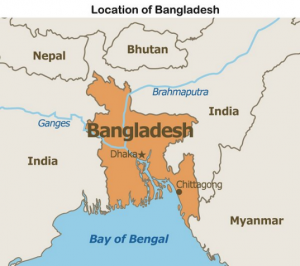
- This marks the culmination of year-long ‘Swarnim Vijay Varsh’ As part this, 30 ‘Mukti Jodhas’ who took part in the war were invited from Bangladesh and honoured.
- December 16 is celebrated as ‘Vijay Diwas’ each year to mark the day of surrender and decisive victory of the Indian armed forces over the Pakistani armed force.
- It was the largest military surrender after the Second World War and the Indian armed forces, along with Mukti Bahini, liberated Bangladesh in a span of just 13 days and also the surrender of 93,000 Pakistani soldiers, the largest surrender of armed forces post Second World War.
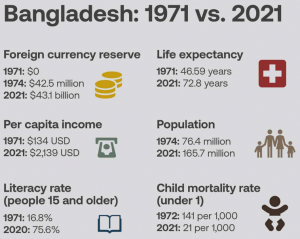
What were the causes of 1971 war?
- 1971 war was a crushing blow to Pakistan and its military. However, Pakistani military and Pakistani policies were responsible for spread of anti-Pakistan sentiment in Bangladesh.
- Sheikh Mujibur Rahman, who is called Bangabandhu the father of the nation of Bangladesh, clinched electoral victory for his party in 1970.
- However, instead of letting the victors rule, Pakistan military used force to sway the outcome. This resulted in a massive exodus of people from Bangladesh to India. This forced India to intervene.
- On December 3, 1971, Pakistani fighter planes launched a pre-emptive strike on Indian Air Force stations. The war had begun. A day later, India decided to support Bangladeshi nationalist groups, notably Mukti Bahini and Indian forces launched Operation Trident which ended in Indian victory.
THE INDIAN POLITY AND GOVERNANCE
3. WINTER PARLIAMENTARY PROCEEDINGS 2021
THE CONTEXT: Natural disasters such as cyclones and floods have increased in the country and the Arsenic in groundwater beyond the permissible limit has been encountered in three districts in Punjab.
THE EXPLANATION:
Frequency of natural disasters
- According to Ministry of Science and technology, the Natured disasters such as cyclones and floods have increased in the country in the last few years.
- There was a significant rise [86 per decade] in the frequency of post-monsoon (October-December) very severe cyclonic storms in the northern Indian Ocean during the past two decades (2000-2018).
- The frequency of extremely severe cyclonic storms over the Arabian Sea increased during the same period.
- There was also an increased frequency of localised heavy rainfall on sub-daily and daily timescales that has enhanced the flood risk over India, contributing to an increased frequency and impacts of floods in urban areas.
Heavy metals in groundwater
According to the data available with Central Ground Water Board, As of December 13, 2021, 36,873 rural habitations were reported to have quality issues in drinking water sources.
Arsenic in groundwater beyond the permissible limit has been encountered in three districts in Punjab, particularly in Malwa belt Mansa, Faridkot and Sangrur;
- Lead from three districts Bathinda, Ferozepur and Muktsar;
- Cadmium from Fatehgarh Sahib, Ludhiana, Patiala and Sangrur;
- Chromium from Bathinda, Mansa, and Sangrur districts;
- Uranium from Bathinda, Moga, Faridkot, Fatehgarh Sahib, Ferozepur, Ludhiana, Muktsar, Patiala and Sangrur, BishweswarTudu
Old dams
India has 1,175 large dams (including one dam of Punjab, Nangal dam) more than 50 years old (constructed in or before 1971), according to the National Register of Large Dams (2019) maintained by the Central Water Commission.
The country has 227 large dams having more than 100 years of service life (constructed in or before 1921).
Cost economics of renewable energy sources
- According to the Ministry of New and Renewable Energy and Power,the country has seen record low renewable energy tariffs of Rs 1.99 per kilowatt-hour for solar power and Rs 2.43 per KWh for wind power, quite favourable as compared to the tariff of electricity produced from non-renewable energy sources.
- In line with the Prime Minister’s announcement at the 26th Conference of the Parties (CoP26) to the United Nations Framework Convention on Climate Change (UNFCCC), the ministry is committed to achieving 500 GW of installed electricity capacity from non-fossil sources by 2030.
Encroachment of water bodies
According to the Ministry of Jal Shakthi, the works related to the enumeration of water bodies, their protection from encroachment or diversion for use for other purposes, comes under the purview of the state government concerned. However, from time to time, the Union Ministry of Jal Shakti conducts census of minor irrigation schemes in the country, which captures data regarding water bodies in rural areas associated with irrigation.
There are 516,303 water bodies in the rural areas of the country being used for minor irrigation purposes, out of which 53,396 are not in use for various reasons such as non-availability of water, siltation, salinity, etc.
4. RAISING LEGAL AGE OF MARRIAGE FOR WOMEN
THE CONTEXT: The Union Cabinet took the decision to raise the legal age of marriage for women from 18 to 21 years. The legal age of marriage for men is 21 years. With this decision, the government will be bringing the age of marriage for both men and women at par.
THE EXPLANATION:
Why is there a minimum age of marriage?
- The law prescribes a minimum age of marriage to essentially outlaw child marriages and prevent the abuse of minors.Personal laws of various religions that deal with marriage have their own standards, often reflecting custom.
- For Hindus, The Hindu Marriage Act, 1955 sets 18 years as the minimum age for the bride and 21 years as the minimum age for the groom. In Islam, the marriage of a minor who has attained puberty is considered valid.
- The Special Marriage Act, 1954 and the Prohibition of Child Marriage Act, 2006 also prescribe 18 and 21 years as the minimum age of consent for marriage for women and men, respectively. For the new age of marriage to be implemented, these laws are expected to be amended.
Why has the government decided to re-examine the age of marriage?
- The NDA government decided to re-examine the age of marriage for women for a number of reasons, including gender-neutrality. An early age of marriage, and consequent early pregnancies, also have impacts on nutritional levels of mothers and their children, and their overall health and mental wellbeing.
- It also has an impact on Infant Mortality Rate and Maternal Mortality Rate, and the empowerment of women who are cut off from access to education and livelihood after anearly marriage.
- The recently released National Family Health Survey (NFHS) revealed that child marriage has come down marginally from 27 per cent in 2015-16 to 23 per cent in 2019-20 in the country, but the government has been pushing to bring this down further.
What is the Jaya Jaitly committee?
- In June 2020, the Ministry for Women and Child Development set up a task force to look into the correlation between the age of marriage with issues of women’s nutrition, prevalence of anaemia, IMR, MMR and other social indices.
- The committee, headed by Jaya Jaitly, the committee was to look at the feasibility of increasing the age of marriage and its implication on women and child health, as well as how to increase access to education for women. The committee was to also recommend a timeline by which the government could roll out the implementation of the policy, as well as the amendments that would need to be made in existing laws in order for this to happen.
What did the committee recommend?
- The committee has recommended the age of marriage be increased to 21 years, on the basis of feedback they received from young adults from 16 universities across the country. Over 15 NGOs were also engaged to reach out to young adults in far-flung areas and marginalised communities.
- committee members have said that feedback has been taken from youth belonging to all religions, as well as from rural and urban areas equally.
- The committee also asked the government to look into increasing access to schools and colleges for girls, including their transportation to these institutes from far-flung areas. Skill and business training has also been recommended, as has sex education in schools.
- The committee said these deliveries must come first, as, unless they are implemented and women are empowered, the law will not be as effective.
- The committee has further recommended that an awareness campaign be undertaken on a massive scale on the increase in age of marriage, and to encourage social acceptance of the new legislation, which they have said would be far more effective than coercive measures.
THE SOCIAL ISSUES AND SOCIAL JUSTICE
5. REPORTERS WITHOUT BORDERS
THE CONTEXT: According to the report, there are currently 488 media professionals imprisoned around the world,the highest number since Reporters Without Borders began counting more than 25 years ago.
THE EXPLANATION:
- By contrast, the number killed this year — 46 — was the lowest since it began issuing annual tallies, due to the relative stabilisation of conflicts in the West Asia.
- According to RSF, China once again has the highest number of imprisoned journalists at 127.The most dangerous countries were once again Mexico and Afghanistan, with seven and six journalist deaths respectively, followed by Yemen and India with four apiece.
- The number of detained scribes has risen by some 20% over the past year, largely due to crackdowns on the media in Myanmar, Belarus and Hong Kong. RSF said it had also never seen so many female journalists detained, with the overall number of 60 representing a third more than 2020.
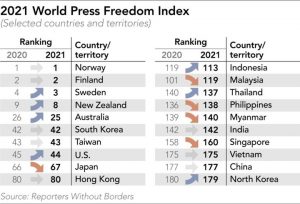
- It also stated that the 2021 report “shows that journalism, the main vaccine against disinformation, is completely or partly blocked in 73% of the 180 countries ranked by the organisation,” and, the “2021 Edelman Trust barometer reveals a disturbing level of public mistrust of journalists, with 59% of respondents in 28 countries saying that journalists deliberately try to mislead the public by reporting information they know to be false”. The report noted that “only 12 of the Index’s 180 countries (7%) can claim to offer a favourable environment for journalism”.
WORLD PRESS REPORT 2021
India is ranked 142, same as in 2020, after it had consistently slid down from 133 in 2016. In the South Asian neighbourhood, Nepal is at 106, Sri Lanka at 127, Myanmar (before the coup) at 140, Pakistan at 145 and Bangladesh at 152.
About World Press Freedom Index:
- Published annually by Reporters Without Borders since 2002, the World Press Freedom Index measures the level of media freedom in 180 countries.
- It is based on an evaluation of media freedom that measures pluralism, media independence, the quality of the legal framework and the safety of journalists.
- It also includes indicators of the level of media freedom violations in each region.
- It is compiled by means of a questionnaire in 20 languages that is completed by experts all over the world. This qualitative analysis is combined with quantitative data on abuses and acts of violence against journalists during the period evaluated.
THE ENVIRONMENT AND ECOLOGY
6. RARE BUTTERFLY SPECIES SIGHTED IN ARUNACHAL PRADESH
THE CONTEXT: Researchers from Mishmi hills of Arunachal Pradesh sighted a rare species of Butterfly, which is first documented in 20 years ago.
THE EXPLANATION:
- The Huang’s Mystic Lethe wui Huang is a species of the brush-footed butterfly first recorded in 1999 from Metok in Southeast Tibet by Hao Huang. It would take another 12 years, in 2011, that the species’ sighting would be re-recorded, this time from Panwa in northern Myanmar’s Kachin state.
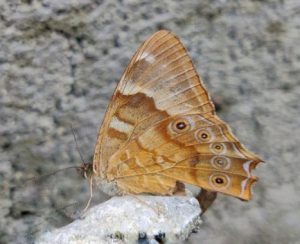
- This elusive butterfly did not feature in scientific records for five years after that, until 2016, when it was spotted at Nujiang in China’s northwest Yunnan.
- The proximity to mainland China (and Bhutan and Myanmar) also means that the state shares much of the same geographical features with the neighbouring countries as it does with the other parts of India.
- Lepidopterists, the scientific term for entomologists specialising in studying butterflies and moths, have had a bloom in recent years in Arunachal Pradesh. The state, nestled in the Eastern Himalayan Biodiversity Hotspot, usually appears in the mainstream news media with repeated claims of Chinese authority over its landmass.
Since the Huang’s Mystic Lethe wui Huang has not been reported in India until now, it is not safeguarded by the country’s Wildlife (Protection) Act unlike several other species of butterflies.
Butterfly festivals
- In 2018 at the fifth edition of the Northeast Butterfly Meet held in the Seijosa area of Arunachal Pradesh’s East Kameng district, 180 species were recorded. These included the Creteuscyrina, the only one from the Creteus genus found in Southeast Asia.
- Butterfly festivals such as those held at Ziro and Namdapha National Park in Changlang district have become the go-to sites for butterfly sightings.
- At a state ministerial meeting held at the premises of the Pakke Tiger Reserve in Seijosa this November, a decision was taken to adopt the “Kaiser-i-Hind” (Teinopalpusimperialis), as the state butterfly.(To read more about this news article kindly refer to November month Perspective Magazine)
- The ‘Pakke Tiger Reserve 2047 Declaration on Climate Change-Resilient and Responsive ‘Arunachal Pradesh, as it has been formally dubbed, is aimed at lowering emissions and achieving sustainable development to help advance India’s agenda on meeting the Paris Agreement goals on climate change leveraging the state’s forest cover and natural resources.
THE PRELIM PRACTICE QUESTION
Q1. Minimum Support Prices (MSP) for agricultural products comes under which of the following box of WTO?
a) Blue box
b) Green box
c) Amber box
d) S & D box
Q2. In the context of the WTO, the subsidies tied to programmes that limit production are known as-
a) Amber box subsidies
b) Blue box subsidies
c) Green box subsidies
d) S & D box subsidies
FOR 16TH DECEMBER 2021 PRELIMS PRACTICE QUESTIONS
Answer: D)
Explanation:
- Holi is not listed in UNESCO intangible heritage sites
- Kuttiyattamm, Nowruz, Kalbelia are listed in the UNESCO intangible heritage sites.


